|
|
First-principles Study on Nanoscale Tungsten Oxide: a Review
ZHAO Linyan, LIU Yangsi, XI Xiaoli, MA Liwen, NIE Zuoren
2021 Vol. 36 (11): 1125–1136
 Abstract
Abstract(
1082 )
 HTML
HTML(
60)
 PDF
PDF(4914KB)(
1286
)
Nanoscale tungsten oxide, as a functional semiconductor with unique physical and chemical properties, is widely used in environment, energy, life science and information technology fields. Based on the application of first-principles study in nanoscale tungsten oxide, the functions of theory calculations are reviewed in the paper. Firstly, the development and basic theory of the first principles and density functional theory are illustrated based on quantum mechanics. Then, the commonly related software in such field of semiconductors, such as MS (Materials studio) and VASP (Vienna ab initio simulation package) are introduced. Furthermore, the recent study of the first-principles on tungsten oxide in terms of electronic structure, interaction of materials, molecular thermodynamics, and so on, is clarified. Finally, the existing problems and future developments of theory calculations used in the field are summarized and prospected.
|
|
|
Sodium Storage Behavior of Nanoporous Sb/MCNT Anode Material with High Cycle Stability by Dealloying Route
ZENG Fanxin, LIU Chuang, CAO Yuliang
2021 Vol. 36 (11): 1137–1144
 Abstract
Abstract(
476 )
 HTML
HTML(
25)
 PDF
PDF(9752KB)(
763
)
To improve the cycle performance of Sb-based anode materials for sodium storage, a simple two-step method (mechanical assisted chemical alloying and acid dissolution dealloying) is proposed to prepare nano sized and porous antimony/multi-walled carbon nanotubes (De-Sb/MCNT) composite. Different methods were employed to characterize the physicochemical and electrochemical properties of De-Sb/MCNT material as anode for sodium storage. The results show that compared to the Raw-Sb/MCNT obtained by direct ball milling of commercial raw Sb and MCNT, the De-Sb/MCNT material exhibits better cycle performance of sodium storage. At a current density of 200 mA·g-1, the De-Sb/MCNT delivers the reversible specific capacity of 408.6 mAh·g-1 with the initial Coulombic efficiency of 69.2%. After 330 cycles at 800 mA·g-1, the capacity retention rate can still retain 88%. The superior cycle performance of De-Sb/MCNT benefits from the “pre-pulverization” effect of mechanically-assisted chemical alloying/acid dissolution dealloying on commercial Sb, which promotes the nanocrystallization and porosity of the material. The De-Sb/MCNT relieves the volume expansion during charging and discharging, thus achieves excellent cycle stability. This dealloying process at ambient temperature is expected to provide a new approach for sodium storage of alloy anode materials with prolonged and stable cycles.
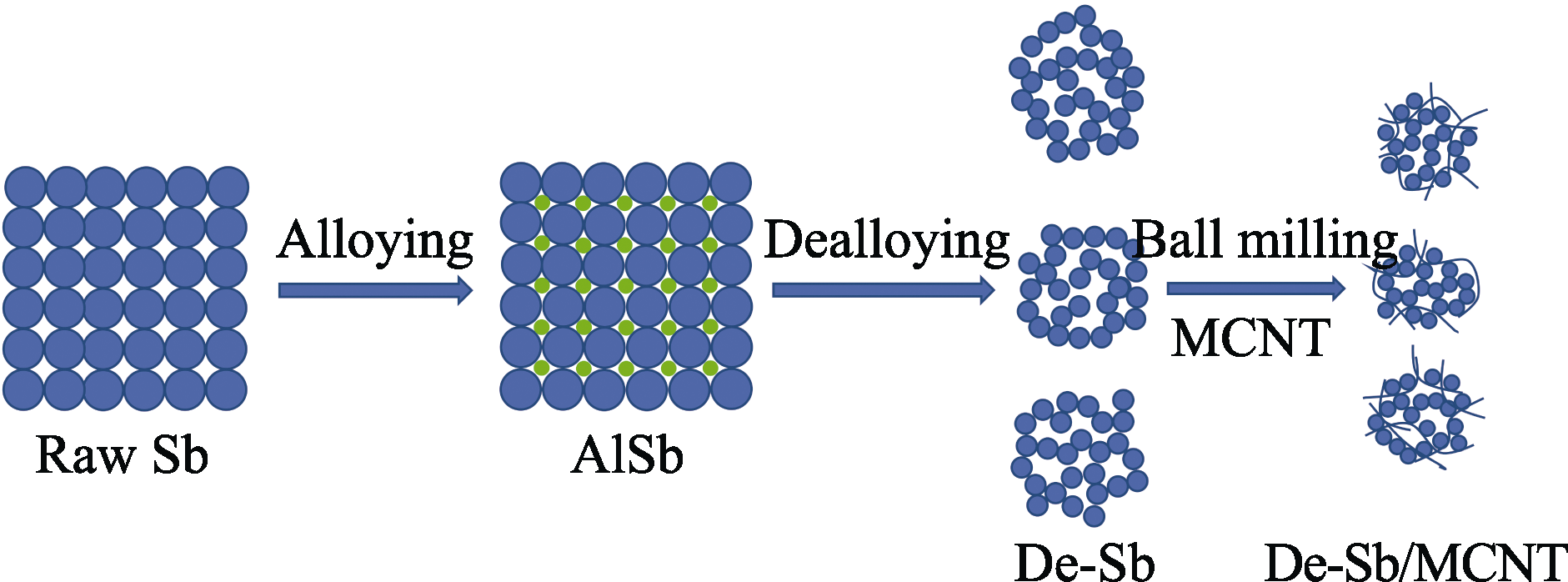
|
|
|
CuO/ZnO Composite Electrocatalyst: Preparation and Reduction of CO2 to Syngas
ZHANG Qingming, ZHU Min, ZHOU Xiaoxia
2021 Vol. 36 (11): 1145–1153
 Abstract
Abstract(
534 )
 HTML
HTML(
34)
 PDF
PDF(4787KB)(
1003
)
The reduction of carbon dioxide (CO2) to syngas (a mixture of CO and H2) can not only realize the carbon cycle and decrease the greenhouse effect but also alleviate the energy crisis. Design of catalyst is the key to realize CO2 resource utilization. Herein, CuO and CuO/ZnO composite were prepared by metal ion co-precipitation method, and their performance of electrochemical CO2 reduction to syngas under different potentials was investigated by adjusting the catalyst components. The results show that the introduction of zinc (Zn) species can decrease the adsorption intensity of intermediate CO2•- on the catalyst, which leads to the decrease of Faraday efficiency (FE) of CO and the increase of FE of H2, thus achieving controllable regulation of CO/H2 in the range of 1/1-1/4 under different applied electrochemical potential. In particular, the total FE of syngas CO/H2 is up to 84% when the ratio of Cu to Zn in the precursor solution is 1 : 2.
|
|
|
Preparation and Photocatalytic Properties of Alga-based CDs-Cu-TiO2 Composite Material
LIU Cai, LIU Fang, HUANG Fang, WANG Xiaojuan
2021 Vol. 36 (11): 1154–1162
 Abstract
Abstract(
404 )
 HTML
HTML(
18)
 PDF
PDF(1779KB)(
689
)
Photocatalytic degradation can efficiently reduce the organic pollutants in wastewater which has broad application prospects. Herein, an algae Enteromorpha Prolifera, was used as the raw material to prepare alga-based carbon dots (CDs) through a hydrothermal method, and CDs-Cu-TiO2 composite nanomaterials were further synthesized as a photocatalyst for pollutant degradation. The results show that CDs, Cu 2+ and TiO2 are closely combined within the composite material. Compared to the pure TiO2 nanoparticles, the absorption of CDs-Cu-TiO2 in the visible light range is significantly enhanced and the fluorescence emission efficiency is decreased. Introduction of CDs and Cu2+produces a synergistic effect, which changes the band gap of the composite material to 2.35 eV, and effectively inhibits the recombination of electrons and holes. The photocatalytic degradation experiment using Rhodamine B as a model pollutant shows that under visible light irradiation the first order rate constant of degradation catalyzed by alga-based CDs-Cu-TiO2 reaches 6.4 times of that degraded by pure TiO2 nanoparticles, and the degradation efficiency after 150 min is close to 100%, which is double of the value when TiO2 nanoparticles apply.
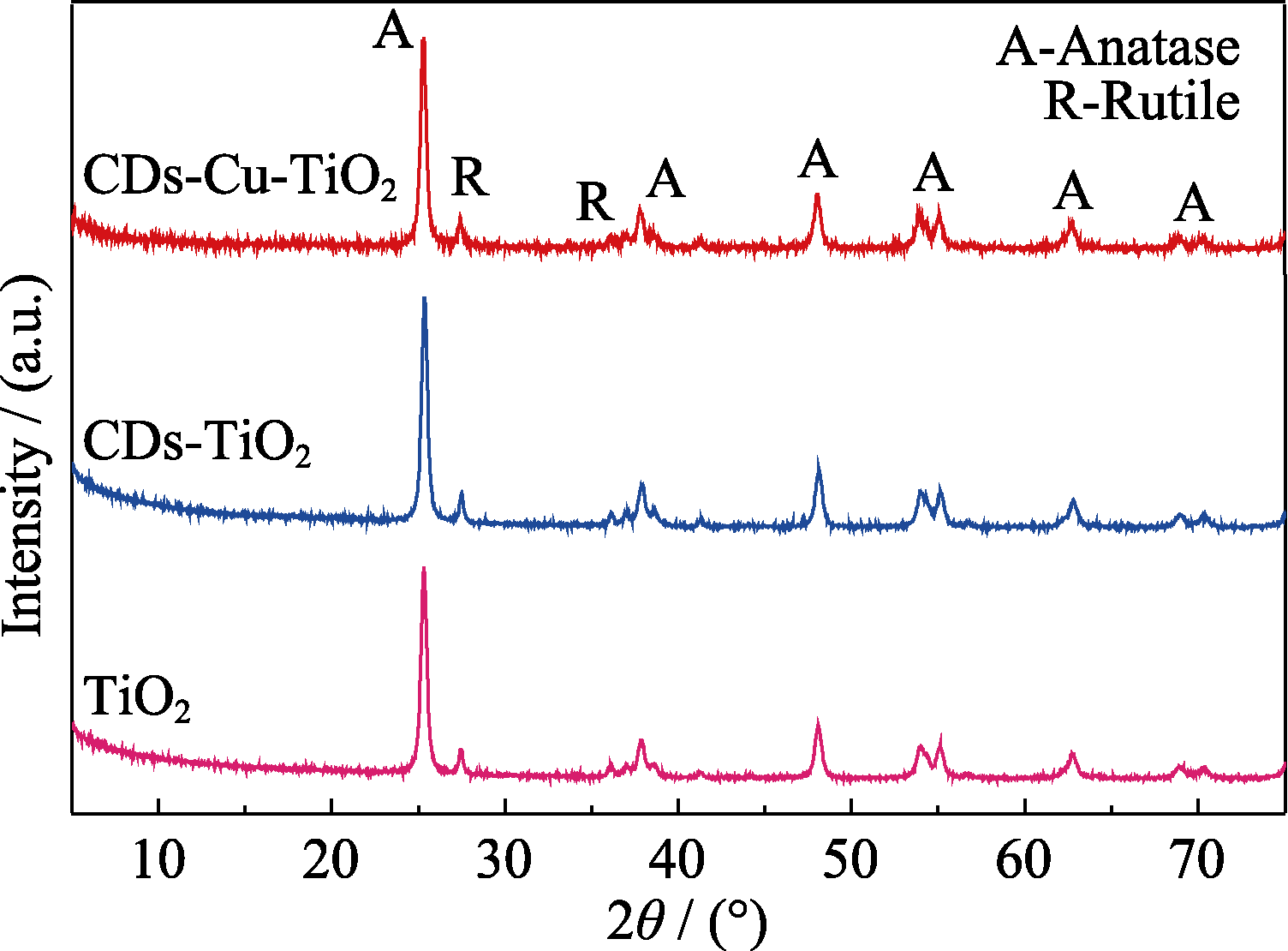
|
|
|
Preparation of 2-hydroxy-1-naphthalene Functionalized SBA-15 Adsorbent for the Adsorption of Chromium(III) Ions from Aqueous Solution
GUO Yu, JIANG Xiaoqing, WU Hongmei, XIAO Yu, WU Dafu, LIU Xin
2021 Vol. 36 (11): 1163–1170
 Abstract
Abstract(
416 )
 HTML
HTML(
16)
 PDF
PDF(4050KB)(
718
)
SBA-15 mesoporous material functionalized with 2-hydroxy-1-naphthaldehyde denoted as Q-SBA-15 was synthesized by using Schiff’s base reaction to remove Cr(III) ions from aqueous solution. A series of characterizations were performed to analyze the morphology, pore structure, element distribution and chemical properties of Q-SBA-15. The results showed that BET surface area and pore size of SBA-15 decreased after modified with 2-hydroxy- 1-naphthaldehyde, but the surface morphology and crystal structure of SBA-15 did not change significantly. To investigate the adsorption properties of Q-SBA-15 toward Cr(III) ions, effects of solution pH and ionic strength were studied. Moreover, adsorption kinetics, adsorption isotherm models, adsorption thermodynamics, and regeneration performance of Q-SBA-15 were analyzed. Adsorption process toward Cr(III) ions onto Q-SBA-15 was well followed by pseudo-second order kinetic model and Langmuir isotherm model. The maximum adsorption capacity of Q-SBA-15 was 102.3 mg/g toward Cr(III) ions under the conditions of 40 ℃ and pH 6. The Cr(III) adsorption onto Q-SBA-15 was found to be spontaneous and endothermic process. The adsorption process mainly based on the coordination chelation of Cr(III) ions with the functionalized groups on Q-SBA-15. Furthermore, Q-SBA-15 exhibited good reusability. Therefore, Q-SBA-15 can be used as a promising adsorbent for removal of Cr(III) ions from aqueous solution.

|
|
|
Co-doped CuO/Visible Light Synergistic Activation of PMS for Degradation of Rhodamine B and Its Mechanism
LAN Qing, SUN Shengrui, WU Ping, YANG Qingfeng, LIU Yangqiao
2021 Vol. 36 (11): 1171–1177
 Abstract
Abstract(
484 )
 HTML
HTML(
30)
 PDF
PDF(908KB)(
949
)
Elemental doping is an important method for improving the efficiency of catalysts. In this study, cobalt-doped CuO catalysts were prepared using a rapid precipitation method for the effective degradation of organic pollutants by photo-assisted activation of potassium peroxymonosulfate (PMS). The Co-doped CuO catalyst demonstrated degradation efficiency as high as 96% within 20 min reaction under visible light conditions, which is much higher than that of the undoped CuO. Cobalt doping transformed copper oxide nanoparticles from a three-dimensional needle-shape structure to a near-two-dimensional thin ribbon-like structure. Cobalt doping increases the flat-band potential of CuO and thus enhances the charge transfer efficiency. Furthermore, the effects of solution pH, initial dye concentration and catalyst dosage on the degradation efficiency were also investigated. XPS and EPR results show that cobalt doping can increase the oxygen vacancy content in CuO and thus improves the activation properties. The result of the trapping agent experiments indicates that main active species in the reaction are holes, while hydroxyl radicals, singlet oxygen, superoxide radicals and sulfate radicals are also involved. Finally, the reaction mechanism for the photo-assisted Co-doped CuO activated PMS degradation of RhB are generally proposed.
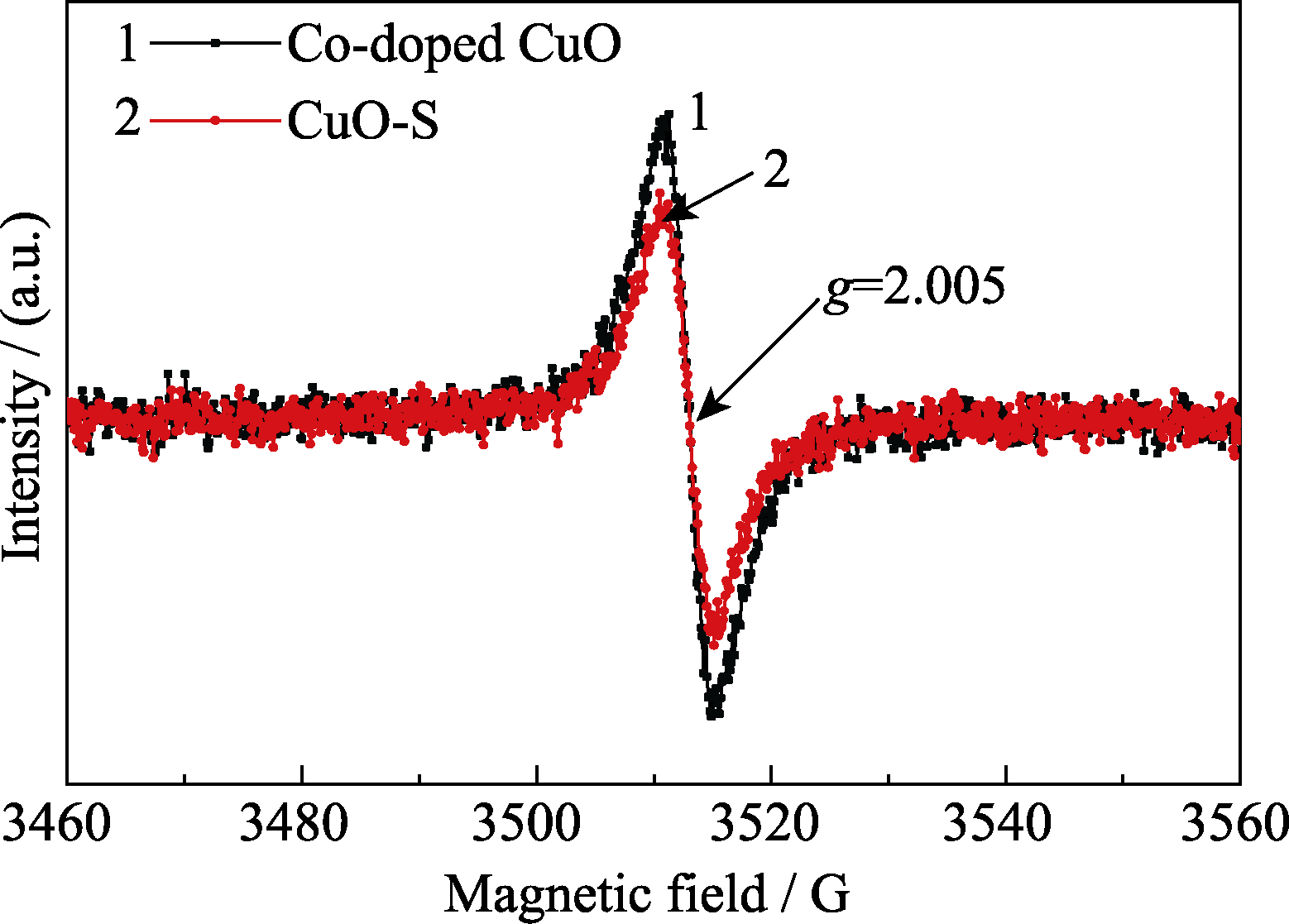
|
|
|
Training Model for Predicting Adsorption Energy of Metal Ions Based on Machine Learning
ZHANG Ruihong, WEI Xin, LU Zhanhui, AI Yuejie
2021 Vol. 36 (11): 1178–1184
 Abstract
Abstract(
505 )
 HTML
HTML(
33)
 PDF
PDF(2409KB)(
838
)
The adsorption behavior of graphene oxide and metal ions was simulated theoretically by density functional theory. In the process of training the prediction model based on the machine learning method, the missing values were processed by matrix completion method, which was widely used in the recommendation systems, and gradient boosting machine (GBM) was trained to explain the importance of factors that affect the adsorption energy. The result showed that nine properties of the adsorption, namely ionic radius, zero-point vibration energy, Mulliken charge, boiling point, dipole moment, atomic weight, molar heat capacity at constant volume (CV), spin multiplicity and bond length, were found to provide 90% importance of the cumulative adsorption energy. Then six regression methods, including support vector regression, ridge regression, random forest, extremely randomized trees, extreme gradient boosting, and light gradient boosting machine, were used to quantitatively evaluate the prediction accuracy. The results showed that machine learning could provide sufficient accuracy to predict adsorption energy. Among them, extremely randomized trees displayed the best prediction performance, with a mean square error only 0.075. Furthermore, the trained model was tested in a system of vanillin adsorbing metal ions, verifying the feasibility of training the prediction model of adsorption energy based on machine learning. But it is still necessary to be further improved. In general, this research takes the advantage of machine learning on the basis of saving experimental time to provide an instructive reference for theoretical research on metal ion removal.
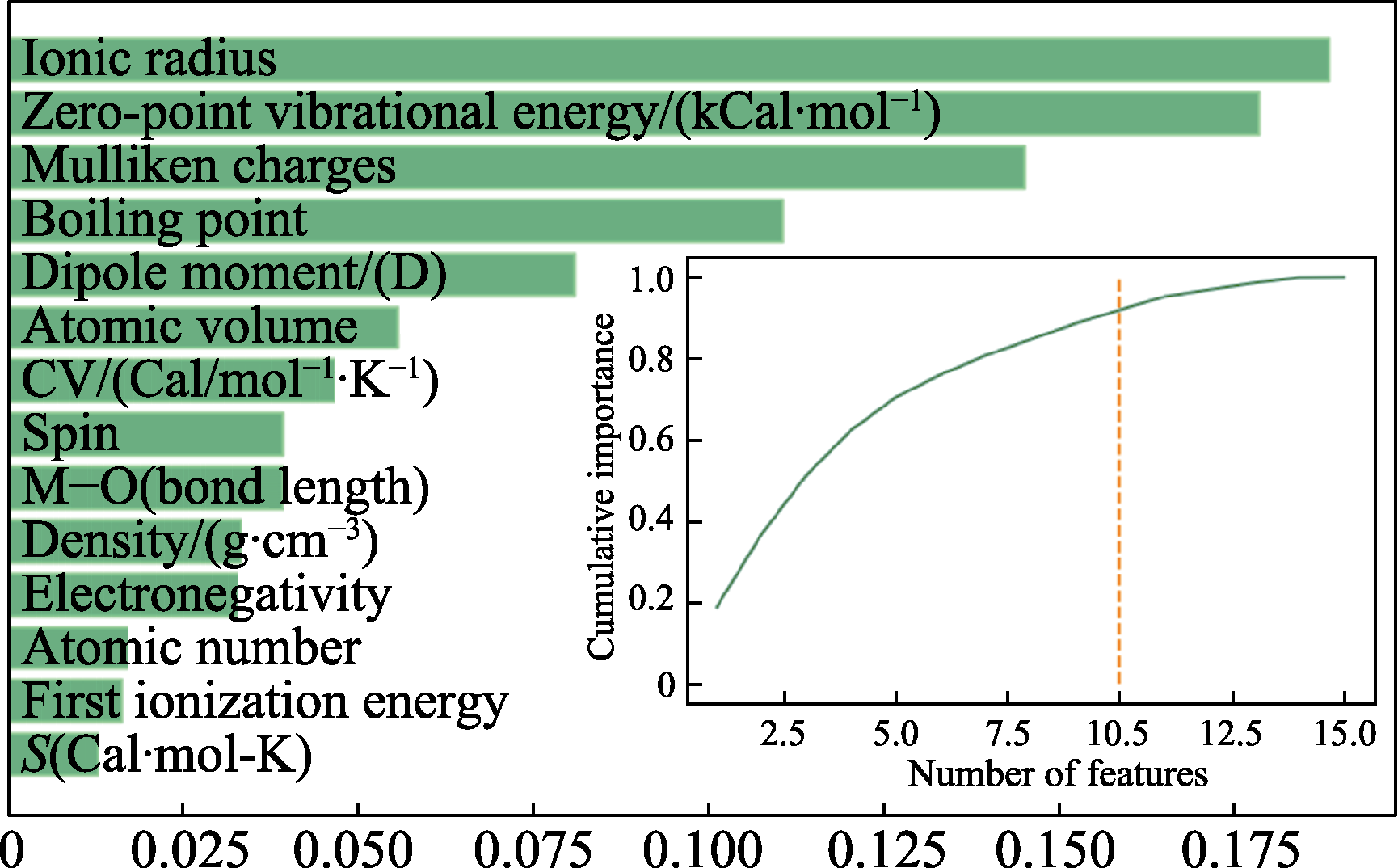
|
|
|
Bending Failure Mechanism Study of Si-Cr-Ti High Temperature Oxidation Resistance Coating via Acoustic Emission Technique
ZHANG Yachen, MENG Jia, CAI Kun, SHENG Xiaochen, LE Jun, SONG Lixin
2021 Vol. 36 (11): 1185–1192
 Abstract
Abstract(
381 )
 HTML
HTML(
10)
 PDF
PDF(1179KB)(
705
)
In this study, the bending failure process of niobium-based high-temperature oxidation resistance coatings at room temperature was investigated by the acoustic emission technique. The signals were classified by the k-mean clustering method. Based on the cross-sectional scanning electron microscopy observation results, the signals of the coatings under bending load were classfied to substrate deformation, surface vertical cracks, sliding interface cracks, and opening interface cracks. The frequency ranges of various types of signals and the wavelet energy coefficients were obtained by fast Fourier transform and wavelet analysis. The acoustic emission signal frequencies of substrate deformation, surface vertical crack, sliding interface crack, and opening interface crack are 100, 310, 590, and 450 kHz, respectively. The coating bending failure process mainly includes four stages, which are 1) the initial damage stage where vertical cracks sprout on the surface of the tensioned side, 2) the surface vertical crack proliferation stage, 3) the damage accumulation stage where the interface cracks on both sides expand rapidly, and 4) the macroscopic spalling stage where the coating on the stressed side is found to spall significantly.
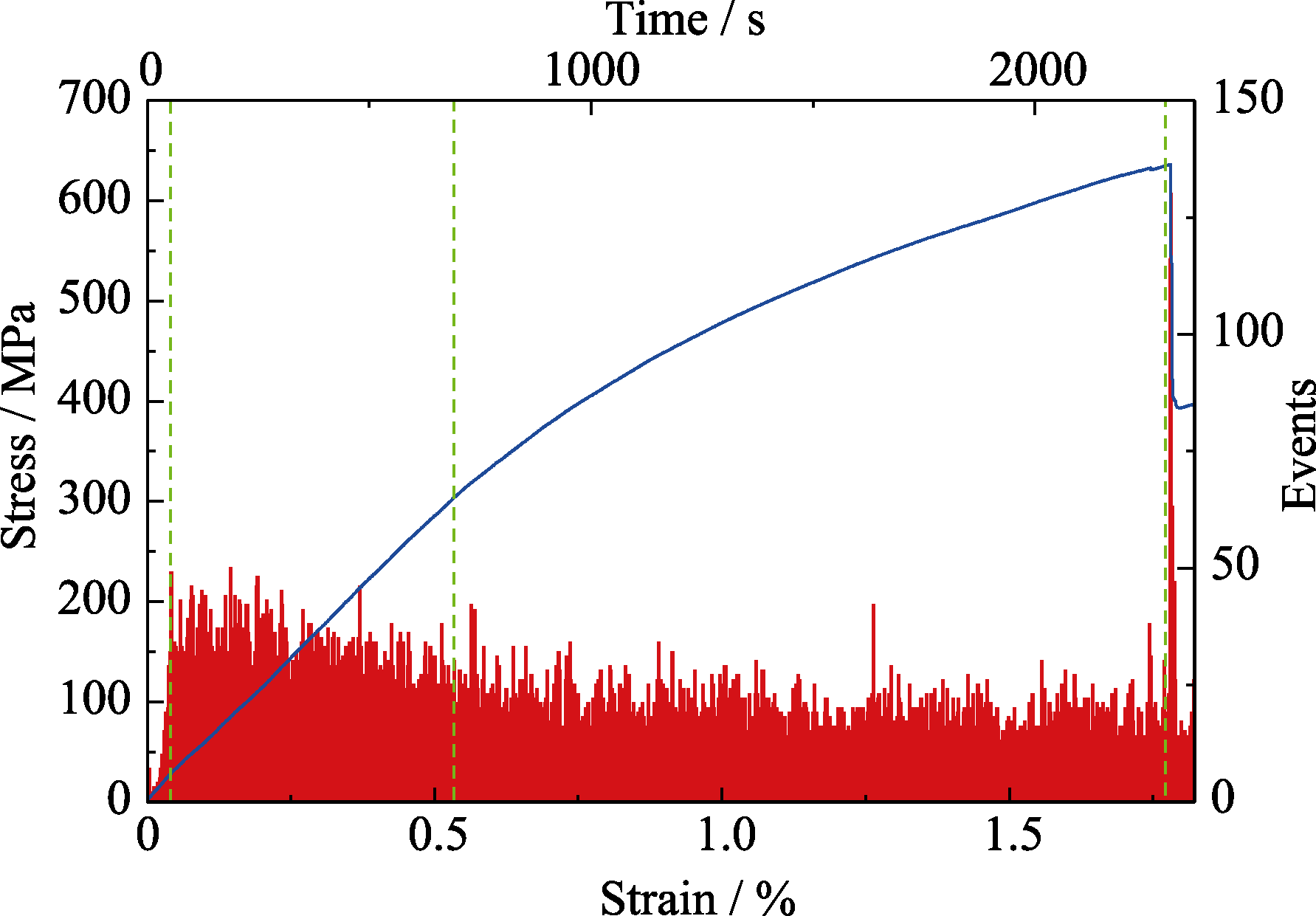
|
|
|
Method of Crystal Structure Identification by Using Kikuchi Diffraction Patterns
PENG Fan, ZENG Yi
2021 Vol. 36 (11): 1193–1198
 Abstract
Abstract(
519 )
 HTML
HTML(
19)
 PDF
PDF(5266KB)(
738
)
Electron backscatter diffraction (EBSD) is an important microstructure analysis method in the field of inorganic materials research. The Kikuchi pattern obtained through EBSD is an intuitive reflection of the internal microscopic crystal structure of the material. In this study, a method of crystal symmetry analysis and crystal structure identification by using Kikuchi patterns was proposed by recognizing the symmetry axis though Kikuchi patterns and using the law of crystal symmetry. The symmetry and crystal structure of three unknown samples were successfully determined by this method. One of the samples was identified to the right crystal system that it naturally belongs, and the other two were fixed on some certain point groups. Through the determination of crystal system and point group, some phase identification results which do not conform to symmetry were excluded. It is indicated that the symmetry analysis of Kikuchi patterns is an effective way to identify the crystal structure and can significantly filter the phase database. Compared with the existing methods, this method greatly reduces the retrieval range of phase identification, and significantly improves the accuracy and reliability of phase identification. It is a promising indexing technique for the new generation of EBSD devices.
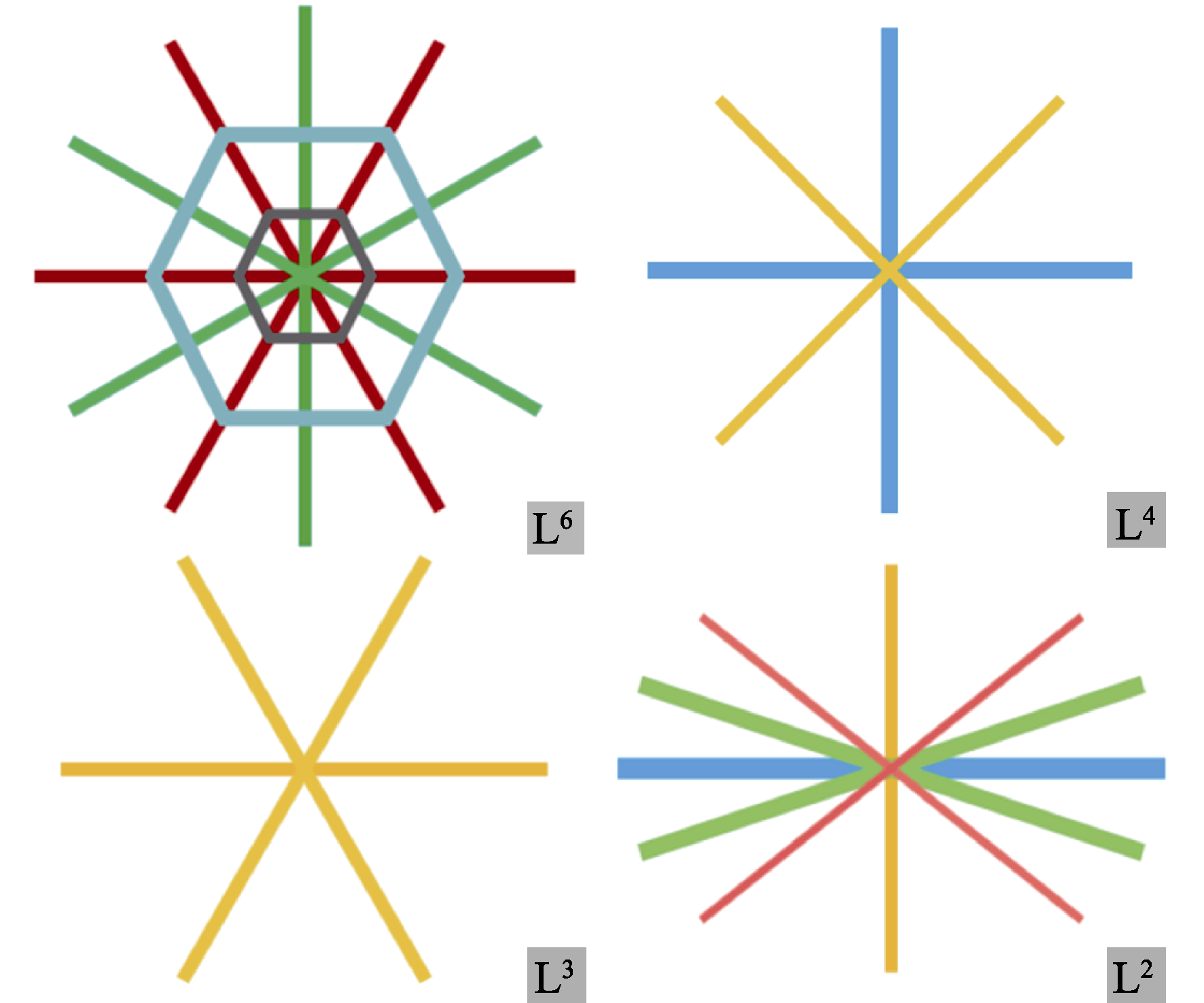
|
|
|
Calcium Silicate Nanowires Based Composite Electrospun Scaffolds: Preparation, Ion Release and Cytocompatibility
BAO Feng, CHANG Jiang
2021 Vol. 36 (11): 1199–1207
 Abstract
Abstract(
307 )
 HTML
HTML(
12)
 PDF
PDF(8872KB)(
562
)
Electrospun scaffolds have been widely used in tissue engineering, particularly, bioceramics such as calcium silicate (CSH) composite electrospun scaffolds have shown excellent bioactivity by releasing SiO32- ions during the degradation of calcium silicate in composite electrospun scaffolds, which are bioactive in stimulating angiogenesis. However, the effective ion concentration is in a narrow range from 0.79 to 1.8 μg/mL. Therefore, it is of great significance for tissue engineering applications to accurately control the ion release concentration of the calcium silicate composite scaffolds, so that the ions released from materials can remain in the effective concentration range for a long time. In this study, we prepared a variety of scaffolds with calcium silicate composite electrospun by adjusting pore size of electrospun scaffolds and controlling the location of calcium silicate nanowires inside the scaffolds, and compared ions release behavior and bioactivity in promoting proliferation of human umbilical vein endothelial cells in vitro. The results showed that, due to the hydrophobicity of polymers and limited diffusion of small pore size, electrospun scaffolds with small pore size by mixed-electrospinning or electrospinning-electrospraying calcium silicate composite displayed slow-release behavior of SiO3 2- ions. In vitro cell experiments showed that the electrospun scaffolds with slow ions release promoted the proliferation of human umbilical vein endothelial cells, indicating that the bioactivity of the composite scaffolds could be regulated by adjusting ions release behavior to obtain optimal bioactivity for tissue engineering applications.
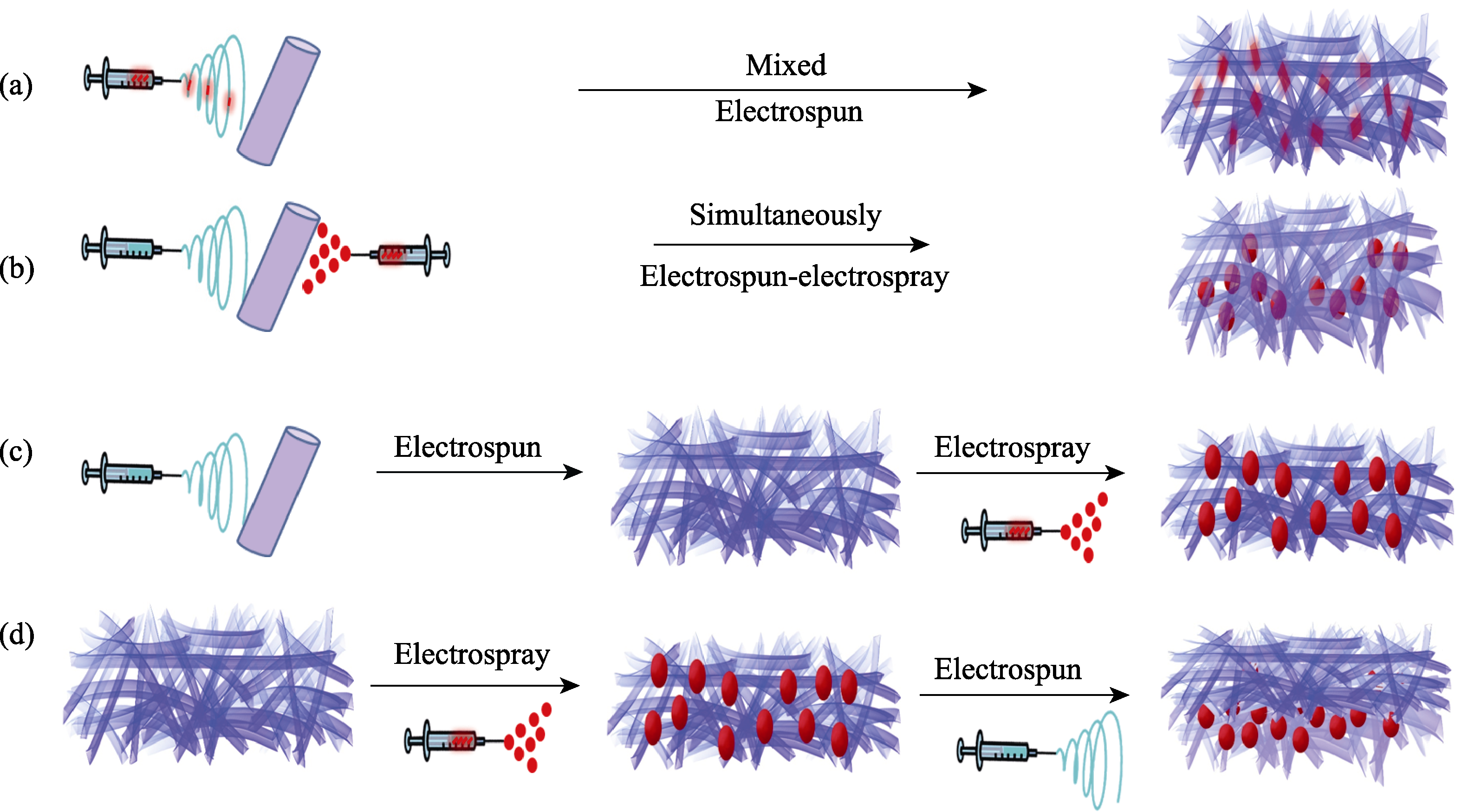
|
|
|
Carbon Spheres for Photothermal Therapy of Tumor Cells: Rapid Preparation and High Photothermal Effect
WEI Chengxiong, JIN Xin, YIN Peinan, WU Chengwei, ZHANG Wei
2021 Vol. 36 (11): 1208–1216
 Abstract
Abstract(
652 )
 HTML
HTML(
37)
 PDF
PDF(3544KB)(
834
)
Photothermal therapy is a new non-invasive treatment method, which can make up for the deficiency of traditional tumor therapy. As an efficient photothermal agent, carbon nanomaterials show great potential in the photothermal therapy of tumor. In this study, a rapid polymerization of pyrogallic acid and formaldehyde was induced by ultrasound-assisted method. Carbon spheres with good biocompatibility and high photothermal conversion efficiency were quickly prepared by subsequent calcination treatment. The prepared carbon spheres are highly monodisperse and uniform in size. Under 808 nm near-infrared light irradiation, they exhibit good photothermal effect and photothermal stability with photothermal conversion efficiency up to 41.4%. Cell experiments show that carbon spheres have no obvious cytotoxicity, and can effectively kill the tumor cells under near-infrared light irradiation. This work is expected to construct efficient photothermal carbon spheres for photothermal therapy of tumor.
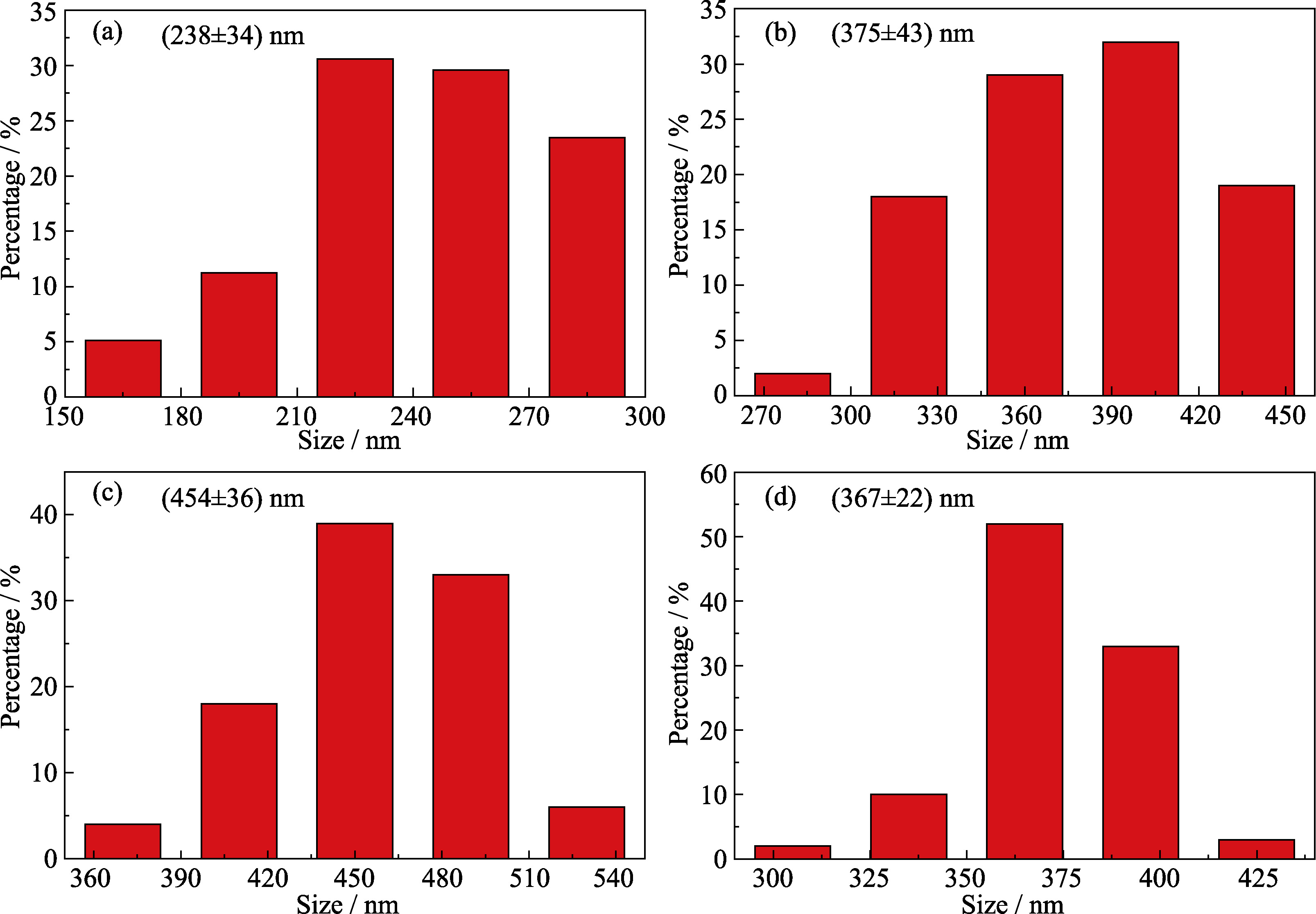
|
|
|
CsPbBr3 Perovskite Quantum Dots/Ultrathin C3N4 Nanosheet 0D/2D Composite: Enhanced Stability and Photocatalytic Activity
SHU Mengyang, LU Jialin, ZHANG Zhijie, SHEN Tao, XU Jiayue
2021 Vol. 36 (11): 1217–1222
 Abstract
Abstract(
590 )
 HTML
HTML(
33)
 PDF
PDF(1420KB)(
929
)
Metal-halide perovskite quantum dots (QDs) have emerged as a potential photocatalyst owing to their remarkable optoelectronic properties. However, the poor stability and insufficient charge transportation efficiency of this type of materials hindered their applications in the photocatalysis field. Herein, we decorated CsPbBr3 QDs on two-dimensional (2D) ultrathin g-C3N4 (UCN) nanosheets to develop a 0D/2D CsPbBr3/UCN composite photocatalyst. The introduction of UCN can not only improve the stability of CsPbBr3 QDs by passivating the surface ligands of CsPbBr3 QDs, but also facilitate the charge transfer due to the suited band gap alignment. Consequently, the obtained CsPbBr3/UCN heterostructure exhibited superior photocatalytic performance to both pristine CsPbBr3 QDs and UCN. This work has provided an efficient strategy for the design of CsPbX3-based heterostructure with high stability and photocatalytic activity.
|
|
|
Ultrafast CO Sensor Based on Flame-annealed Porous CeO2 Nanosheets for Environmental Application
LI Pengpeng, WANG Bing, WANG Yingde
2021 Vol. 36 (11): 1223–1230
 Abstract
Abstract(
435 )
 HTML
HTML(
25)
 PDF
PDF(2685KB)(
795
)
As a highly toxic gas, CO is one of the culprits of air pollution. Long-term inhalation will also cause great harm to the human body and even death. How to achieve rapid CO monitoring is an important challenge in sensing field. CO as one of the of air pollution, long time inhalation will reduce the oxygen carrying capacity of blood and in severe cases death. Therefore, effective monitoring of CO is necessary. In this study, porous CeO2 nanosheets (CeO2 NSs) were obtained via flame annealing intermediate product CeCO3OH nanosheets synthesized by simple hydrothermal method. Through controlling of the flame time, oxygen vacancies were introduced into the CeO2 NSs. As a result, the CeO2 NSs annealed with 2 min (CeO2-2min NSs) exhibited outstanding reproducibility and selectivity towards CO gas. Particularly, the response/recovery time were extremely fast (2 s/2 s) towards 500 μL/L CO at 450 ℃ as well as finely functional relationship between response and concentration of CO at a wide detection range (10-10000 μL/L). The superior gas sensing performance of CeO2-2min NSs can be ascribed to the high aspect ratios of the porous two-dimensional structure and abundant oxygen vacancies in the crystals. This work may supply a strategy for designing ultrafast gas sensors which can detect target gas at a wide range.
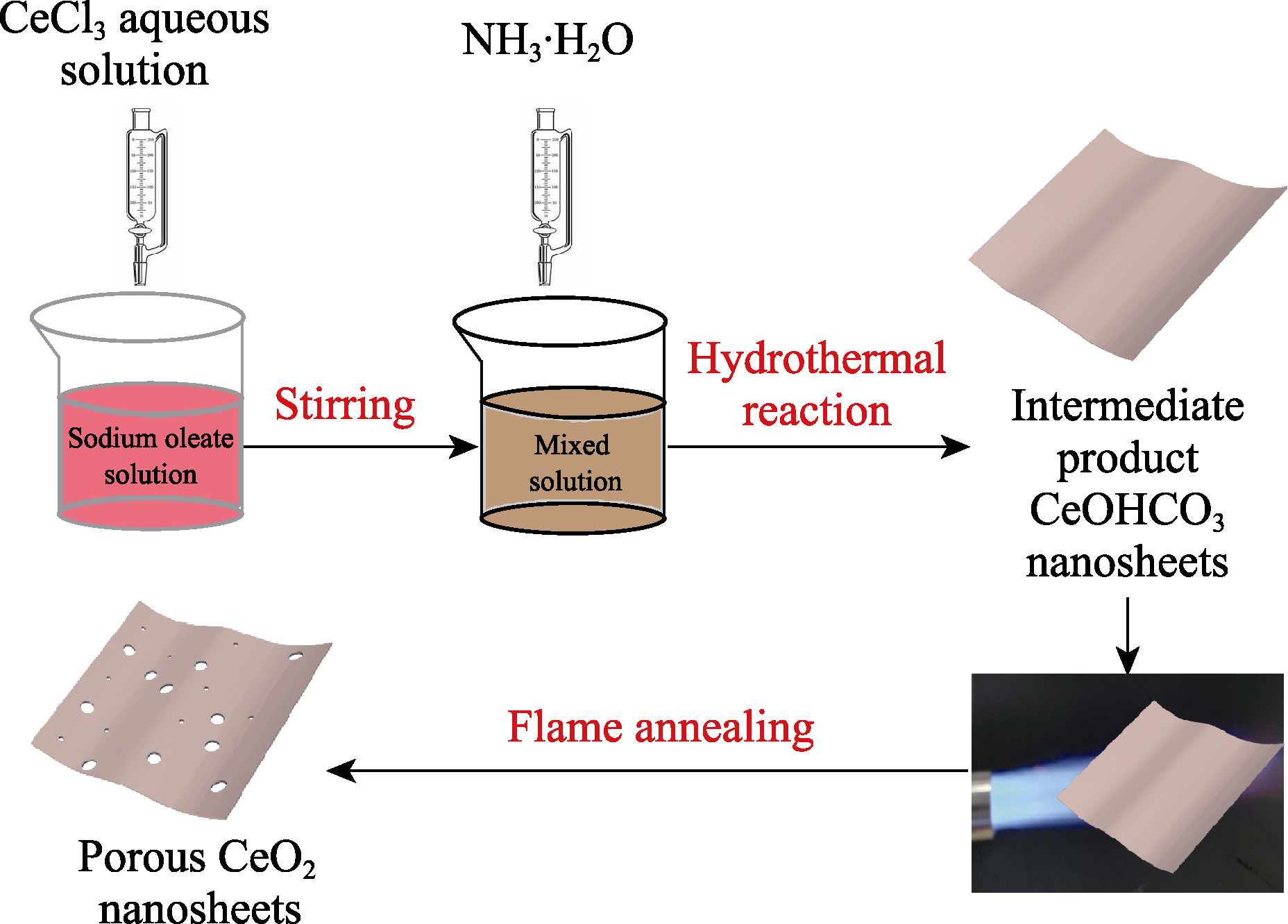
|
|
|
Microstructure and Properties of ZrO2-AlN Composite Ceramics by Microwave Sintering
MU Tinghai, XU Wentao, LING Junrong, DONG Tianwen, QIN Zixuan, ZHOU Youfu
2021 Vol. 36 (11): 1231–1236
 Abstract
Abstract(
415 )
 HTML
HTML(
19)
 PDF
PDF(853KB)(
692
)
Zirconia (ZrO2) ceramics have excellent mechanical properties, but its application is limited by ZrO2-AlN low thermal conductivity (TC). Zirconia-aluminum nitride (AlN) composite ceramics ZrO2-AlN with high TC were designed and successfully fabricated by microwave sintering. After optimization of preparation conditions, the reaction between two substances was inhibited and the dense composite (relative density>99%) was obtained. The microstructure evolution, thermal behavior and mechanical properties were investigated in detail. The room temperature thermal conductivity, thermal diffusion coefficient and thermal capacity of ZrO2-AlN composites increase with AlN content increasing, reaching 41.3 W/(m·K), 15.2 mm2/s and 0.6 J/(g·K), respectively. Such ZrO2-AlN composites with high thermal conductivity and improved thermal shock resistance have broad application prospects in the field of high temperature heat exchange materials of energy systems.
|
|